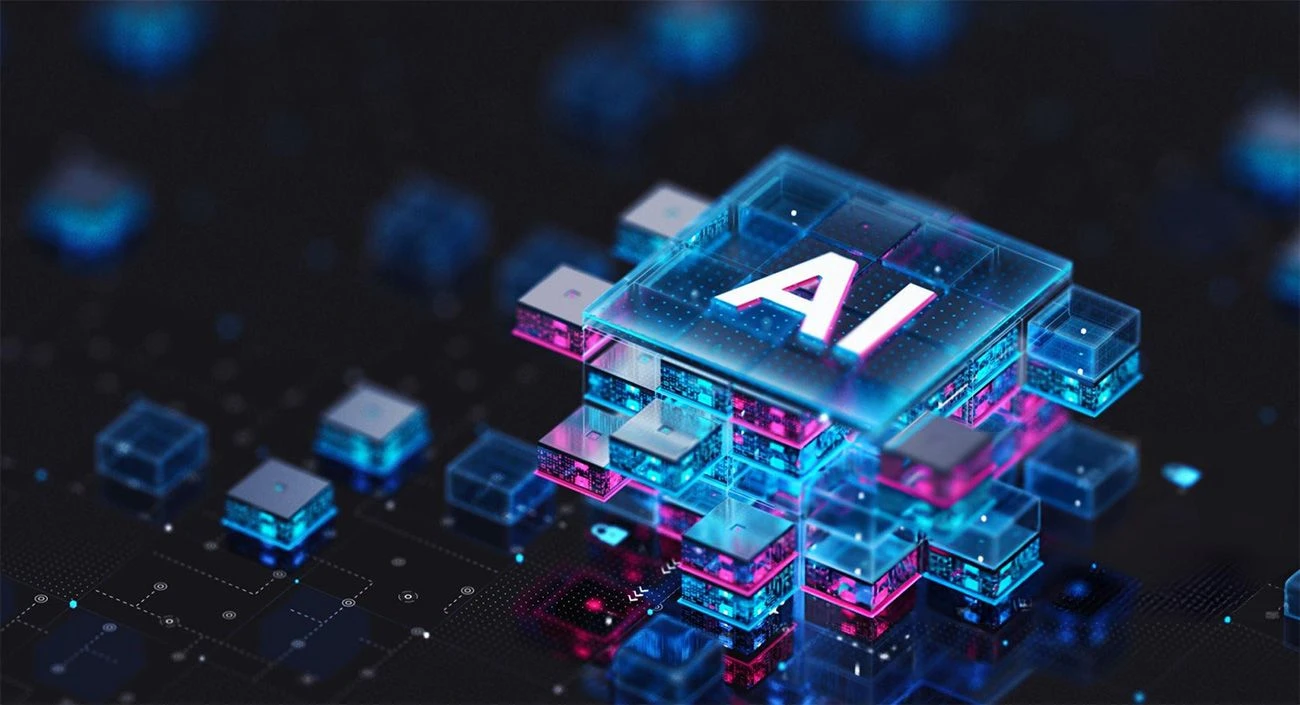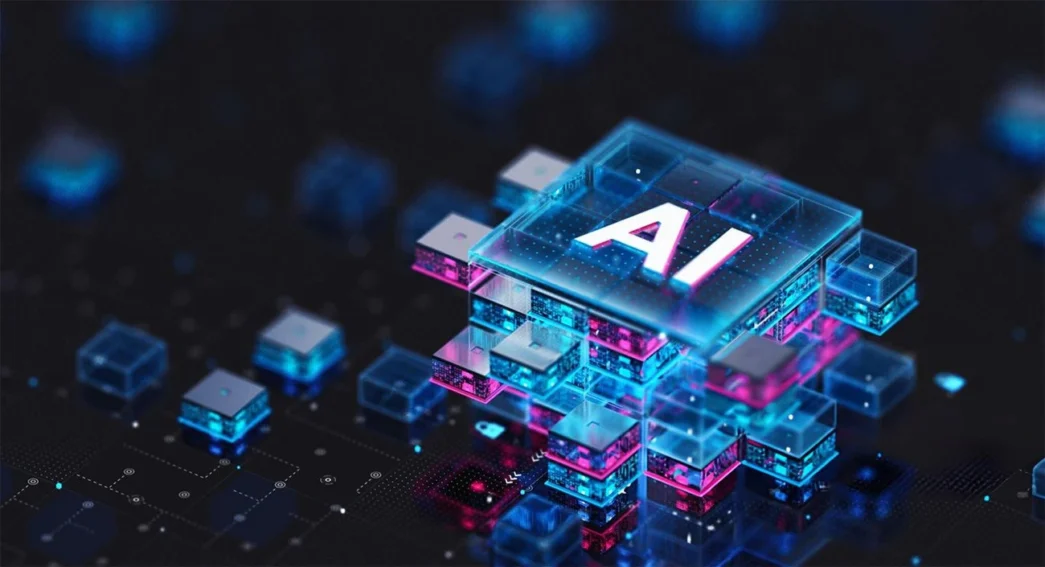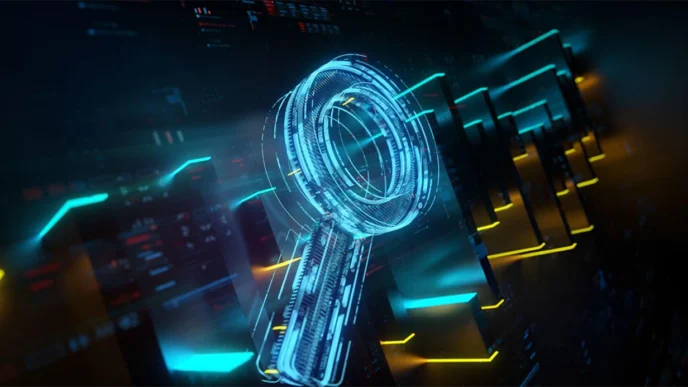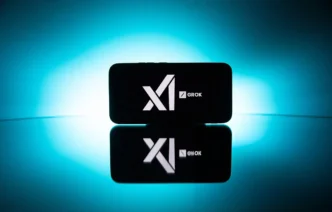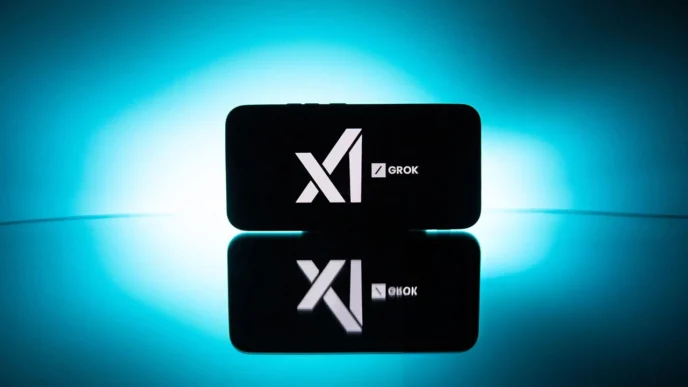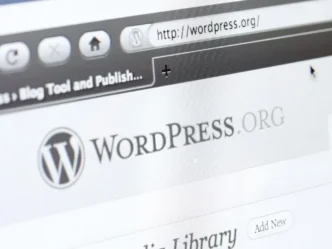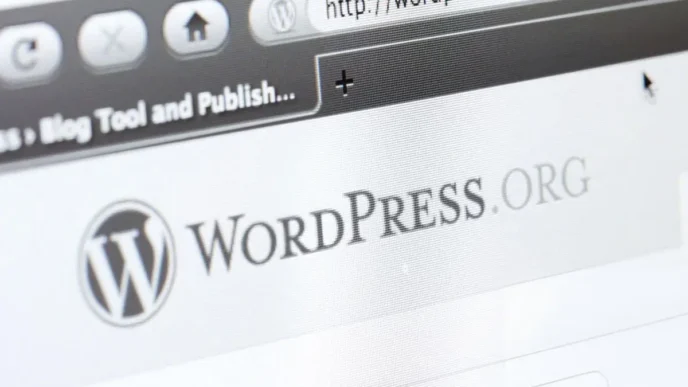Here’s the thing: ChatGPT-5 business automation isn’t just another tech buzzword. It’s the difference between working 60-hour weeks and actually having time to grow your business. Between hiring three new employees or getting the output of ten. I’ve watched businesses transform their entire operations in weeks, not years, using the strategies I’m about to share.
In this guide, you’ll discover exactly how to use ChatGPT for business in 2025. We’ll explore practical automation strategies that actually work, dive into real implementation examples, and I’ll show you the exact steps to automate your most time-consuming tasks. You’ll learn which ChatGPT automation tools deliver results, how to choose the right approach for your specific needs, and most importantly, how to get started today, not someday.
What Can ChatGPT-5 Do for Business? An Overview
The Evolution of AI Business Automation in 2025

Remember when “automation” meant setting up email filters and maybe a few Excel macros? Those days feel like ancient history now. The shift from ChatGPT-4 to ChatGPT-5 isn’t just an upgrade, it’s like going from a bicycle to a Tesla.
Back in 2023, businesses were just starting to experiment with AI chatbots. Fast forward to today, and machine learning business solutions have become as essential as having a website. ChatGPT-5 doesn’t just understand your questions; it anticipates your needs, learns your business patterns, and adapts faster than any human assistant could.
The real game-changer? Context windows that can handle entire business operations manuals, multi-modal understanding that processes everything from spreadsheets to voice memos, and reasoning capabilities that rival junior analysts. We’re not talking about simple chatbots anymore. This is digital transformation strategies at their most powerful.
Why ChatGPT-5 Is a Game-Changer for Modern Businesses
Let me paint you a picture. A client of mine, Sarah, runs a growing e-commerce business. Six months ago, she was spending 3 hours daily on customer service emails. Today? ChatGPT-5 handles 94% of them, and her customer satisfaction scores have actually gone up.
But it’s not just about replacing tasks. What can ChatGPT-5 do for business that previous versions couldn’t? Think real-time market analysis, predictive inventory management, and customer insights that would take a team of analysts weeks to uncover. It understands context across multiple conversations, remembers your business specifics, and can switch between roles, from data analyst to copywriter to strategic advisor, in seconds.
The kicker? It’s getting more affordable every month. What cost enterprises $100,000 to implement two years ago now runs on a $200 monthly subscription.
Who Should Use This Guide?
This guide is for you if you’re tired of hearing about AI but not seeing actual results. Whether you’re a solo entrepreneur juggling everything yourself, a department head looking to do more with less, or a C-suite executive driving digital transformation, the strategies here apply.
You don’t need a computer science degree. You don’t need a massive budget. You just need to be ready to work smarter, not harder. (And yes, even if you still occasionally ask your kids how to share your screen on Zoom, you’ll be fine.)
Key Benefits of ChatGPT-5 Business Automation
5 Ways ChatGPT-5 Reduces Operational Costs
Let’s talk money, because that’s what matters when you’re running a business.
1. Automated Customer Service Savings
The math is simple: A customer service rep costs you $35,000-$50,000 annually. ChatGPT-5? About $2,400 per year for unlimited conversations. But here’s what most people miss, it’s not about replacing your entire team. Smart businesses use automated customer support systems to handle the routine 70% of inquiries, letting human agents focus on complex, high-value interactions. Result? Better service, happier employees, and 73% lower support costs.
2. Reduced Administrative Overhead
Your highest-paid employees are probably spending 40% of their time on admin work. Email scheduling, report generation, data entry, tasks that ChatGPT-5 can handle in seconds. One marketing director told me she saved 12 hours weekly just on content planning and campaign reporting. That’s $48,000 in annual productivity gains from one person alone.
3. Lower Training and Onboarding Expenses
New employee onboarding typically takes 3-6 months to full productivity. With ChatGPT-5 creating personalized training materials, answering questions 24/7, and providing consistent information, that timeline drops to 4-6 weeks. The productivity enhancement tools built into ChatGPT-5 mean new hires get up to speed faster, make fewer mistakes, and need less hand-holding from managers.
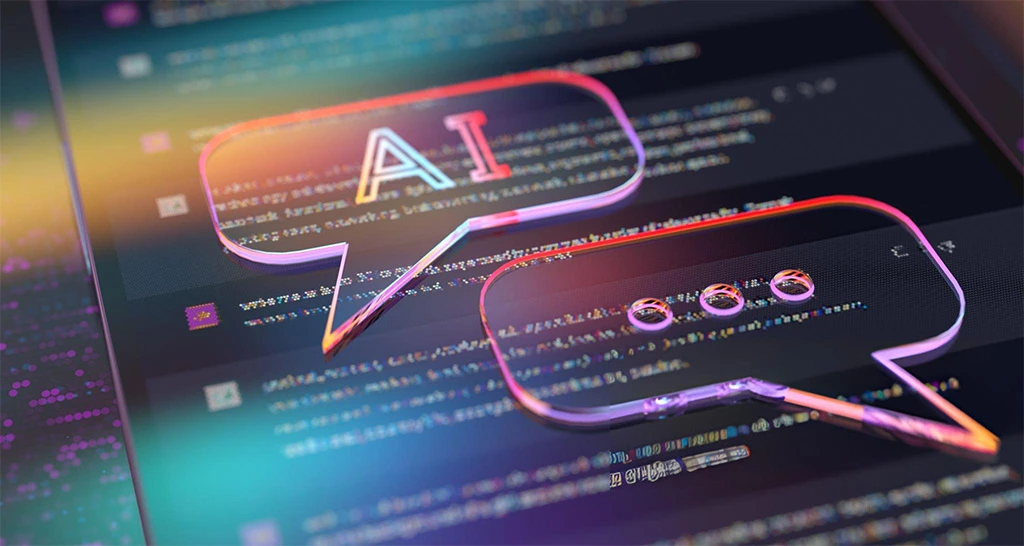
4. Eliminated Software Redundancy
How many specialized tools does your business pay for monthly? Grammar checkers, translation services, basic design tools, transcription software, ChatGPT-5 consolidates dozens of these micro-subscriptions into one platform.
5. Minimized Error Costs
How ChatGPT-5 Improves Team Productivity
Picture this: It’s Monday morning, and instead of your team spending the first hour catching up on emails and planning their week, everything’s already organized. ChatGPT-5 has summarized weekend communications, prioritized tasks, and even drafted initial responses for review.
The real magic happens when teams stop doing work and start directing work. Your marketing manager becomes a strategist instead of a copywriter. Your ops manager focuses on optimization instead of scheduling. Everyone moves up the value chain.
I’ve seen teams literally double their output, not by working harder, but by eliminating the friction between idea and execution. Need a proposal drafted? 5 minutes instead of 2 hours. Require meeting notes distributed? Done before everyone’s left the room.
Scalability Advantages for Growing Companies
Here’s what keeps growing businesses up at night: How do you scale without exploding your overhead? You landed that big contract, but now you need to triple your customer service capacity. Yesterday.
ChatGPT-5 scales instantly. No hiring, no training, no office space. Whether you’re handling 10 customer inquiries or 10,000, the system adapts immediately. One of my clients went from 50 to 500 daily customer interactions during a product launch. Their human team? Stayed exactly the same size.
But scalability isn’t just about handling volume, it’s about maintaining quality while growing. ChatGPT-5 ensures your thousandth customer gets the same attention as your first.
Understanding Artificial Intelligence Workflow Optimization
What Is Workflow Automation?
Forget the technical jargon. Artificial intelligence workflow optimization is simply teaching AI to handle the repetitive parts of your business so humans can focus on the creative, strategic work that actually matters.

Think of it like this: Every business has workflows, sequences of tasks that happen repeatedly. Customer signs up → Welcome email sent → Account created → Onboarding scheduled. Traditionally, someone manually handles each step. With ChatGPT-5, these workflows run themselves, triggering the right action at the right time without human intervention.
The beautiful part? You don’t need to be technical to set this up anymore. If you can describe your process in plain English, ChatGPT-5 can help automate it.
How Natural Language Processing Powers ChatGPT-5
Here’s where things get interesting. Natural language processing applications in ChatGPT-5 don’t just understand words, they understand intent, context, and even emotional nuance. This isn’t your grandmother’s chatbot responding with pre-programmed scripts.
When a customer writes, “This stupid thing won’t work and I’m about to throw it out the window,” ChatGPT-5 recognizes frustration, urgency, and hyperbole. It responds with empathy, prioritizes the ticket, and maybe even injects a bit of humor to defuse tension. Try getting that from a traditional automation tool.
The system learns your business language too. It picks up on how you communicate, your brand voice, even industry-specific terminology. Within weeks, it’s writing responses that sound like they came from your best employee on their best day.
The Role of Conversational AI in Modern Enterprises
Conversational AI for enterprises has evolved from a nice-to-have to a competitive necessity. But here’s what most businesses get wrong, they think of it as a replacement for human interaction. It’s not. It’s an amplifier.
Modern enterprises use ChatGPT-5 as a universal interface. Instead of employees learning ten different software systems, they just talk to ChatGPT. “Pull last quarter’s sales data for the Northeast region and compare it to our projections.” Done. No SQL queries, no database navigation, no IT support ticket.
The shift is profound. Employees at every level gain access to insights and capabilities previously reserved for specialists. Your sales rep can run customer sentiment analysis. Your receptionist can generate financial reports. The playing field doesn’t just level, it rises.
ChatGPT Business Use Cases 2025: Real-World Applications
Automated Customer Support Systems Implementation
24/7 Chatbot Customer Service
Gone are the days of “business hours.” Your customers expect answers at 2 AM on a Sunday, and ChatGPT-5 delivers. But this isn’t about basic FAQ responses anymore.
Modern implementations handle complete customer journeys. A customer messages about a delayed order at midnight. ChatGPT-5 checks the shipping system, identifies the issue, provides real-time tracking, offers a discount code for the inconvenience, and schedules a follow-up, all while you’re sleeping. By morning, you have a happy customer instead of an angry review.
Ticket Routing and Prioritization
Smart routing changes everything. ChatGPT-5 reads incoming support tickets, understands the urgency, complexity, and customer value, then routes accordingly. VIP customer with a critical issue? Straight to your senior support lead. Basic password reset? Handled automatically.
The system even predicts escalation risks. It flags messages like “This is the third time I’m contacting you” before they explode into social media complaints.
Customer Sentiment Analysis
Real-time sentiment tracking across all customer interactions reveals patterns humans miss. ChatGPT-5 notices when multiple customers mention the same confusion, when satisfaction dips after website updates, or when a particular product starts generating unusual complaints. You fix problems before they become crises.
AI-Powered Task Management and Scheduling
Automated Meeting Scheduling
“Let’s find a time to meet” used to mean 47 emails. Now? ChatGPT-5 handles the entire dance. It knows everyone’s real availability (not just what the calendar says), understands meeting priorities, and even factors in prep time and travel.
But here’s the clever part: It learns meeting patterns. It knows your weekly team check-in usually runs over, that Janet needs 15 minutes after client calls to decompress, and that nobody’s productive in meetings after 4 PM on Fridays.
Project Milestone Tracking
Forget manual status updates. ChatGPT-5 monitors project channels, tracks deliverables, and automatically updates stakeholders. It notices when tasks are falling behind, when dependencies are at risk, and when someone might need help but hasn’t asked for it.
One project manager told me this AI-powered task management approach saved her 15 hours weekly. That’s nearly two full working days returned to actual project work instead of project administration.
Content Creation and Marketing Automation
Blog Post and Social Media Generation
Let’s be honest, keeping up with content demands is exhausting. ChatGPT-5 doesn’t replace your creative team; it amplifies them. Your content strategist outlines topics, and ChatGPT-5 generates first drafts in your brand voice. Your social media manager creates one core message, and ChatGPT-5 adapts it for LinkedIn, Twitter, Instagram, and TikTok.
The time savings are just the start. Consistency improves. Publishing frequency increases. And your team actually enjoys their work again because they’re creating strategy, not grinding out variations of the same message.
Email Campaign Personalization
Mass personalization sounds like an oxymoron, but ChatGPT-5 makes it reality. It crafts unique email variations based on customer history, preferences, and behavior. Not just “Hi [First Name]” but genuinely different messages that resonate with each segment.
Open rates jump 40%. Click-throughs double. And you’re not spending weekends writing seventeen versions of the same campaign.
Data Analysis and Business Intelligence
This is where ChatGPT-5 truly shines. Upload your sales data, customer feedback, and market research. Ask questions in plain English. “Why did sales drop in March?” “Which products do customers buy together?” “What’s driving negative reviews?”
You get insights that would take analysts days to uncover, explained in language anyone can understand. No pivot tables, no SQL queries, just answers.
Sales Process Automation and Lead Qualification
Your sales team should be closing deals, not qualifying leads. ChatGPT-5 engages with prospects, asks qualifying questions conversationally, scores their potential, and even schedules demos with hot leads. By the time your sales team talks to someone, they know their budget, timeline, pain points, and decision-making process.
The conversion rates are insane. One SaaS company saw qualified lead volume increase 3x while their sales team actually worked fewer hours.
HR and Recruitment Automation
Hiring is broken, and everyone knows it. ChatGPT-5 fixes the worst parts. It screens resumes in seconds (actually reading them, not just keyword matching), conducts initial screening interviews via chat, and even helps create better job descriptions that attract the right candidates.
But my favorite implementation? Automated reference checking. ChatGPT-5 reaches out to references, asks thoughtful questions, and summarizes findings. What used to take days now happens overnight.
How to Use ChatGPT for Business: Step-by-Step Setup Guide
Prerequisites: What You Need Before Starting
Account Setup and Access Levels
First things first, you need the right ChatGPT plan. The free version is great for experimenting, but how to use ChatGPT for business effectively requires at least ChatGPT Plus ($20/month per user). For real automation, you’re looking at Team ($30/user/month) or Enterprise (custom pricing).
Don’t panic about the cost. Start with one Plus account, prove the value, then scale. Most businesses recover their investment within the first week.
Team Permissions and Security Settings
Security isn’t optional. Set up two-factor authentication immediately. Create separate workspaces for different departments. Establish clear guidelines about what data can and cannot be shared with AI.
Pro tip: Start with a “sandbox” workspace where teams can experiment without risk. Once they’re comfortable, roll out to production workflows.
Step 1: Defining Your Business Automation Goals
Stop trying to automate everything at once. (Trust me, I’ve watched too many businesses fail this way.) Pick one painful, repetitive task that happens daily. Customer email responses? Invoice processing? Meeting scheduling?
Write down exactly what success looks like. “Reduce response time from 24 hours to 1 hour” beats “improve customer service.” Specific goals get specific results.
Step 2: Mapping Current Workflows and Pain Points
You’ll find tasks that take hours daily but add zero strategic value. Those are your automation goldmines. Start there.
Step 3: Choosing the Right ChatGPT Plan for Your Business
Free vs. Plus vs. Enterprise: Comparison
The free tier works for personal use, but you’ll hit limits fast in business settings. Plus gives you priority access, faster responses, and plugin access, essential for any serious implementation.
Team adds collaboration features, admin controls, and higher message limits. Perfect for small to medium businesses ready to automate business processes with AI across departments.
Enterprise Features and Pricing
Enterprise isn’t just about volume, it’s about customization, security, and support. You get SSO integration, advanced admin controls, custom data retention policies, and dedicated support. Pricing starts around $5,000/month but scales with usage.
Is it worth it? If you’re handling sensitive data or need 99.9% uptime guarantees, absolutely.
Step 4: Integrating ChatGPT with Existing Systems
CRM Integration Options
Your CRM is the heart of your business, and ChatGPT-5 needs to talk to it. Salesforce, HubSpot, Pipedrive, they all work, but the integration method matters.
Native integrations are ideal but rare. Zapier connections work for most use cases. For complex needs, the API is your friend. Start simple with Zapier, then graduate to API when you need more control.
Project Management Tool Connections
Whether you’re using Asana, Monday, or Trello, ChatGPT-5 can live right inside your workflow. It updates tasks, creates projects, and even attends your standup meetings (virtually).
The magic happens when ChatGPT starts connecting dots across tools. It notices that the delayed project in Asana relates to the support ticket spike in Zendesk and the inventory issue in your ERP. Suddenly, you’re seeing your entire business as an interconnected system, not isolated departments.
Best AI Automation Tools for Business: ChatGPT Integrations
Top ChatGPT Automation Tools and Platforms
Zapier for No-Code Automation
Zapier is your gateway drug to automation. No coding, no complexity, just “when this happens, do that.” When someone fills out your contact form, ChatGPT writes a personalized response, Zapier sends it, and creates a CRM record. Magic.
Setting Up Zapier Workflows
Start with templates. Zapier has thousands, and most work out of the box. “ChatGPT + Gmail” for automated email responses. “ChatGPT + Slack” for intelligent notifications. “ChatGPT + Google Sheets” for data analysis.
The secret? Chain multiple steps. Form submission triggers ChatGPT to qualify the lead, which triggers email sequence, which triggers calendar booking. One action cascades into complete automation.
Make.com (Integromat) Advanced Scenarios
When Zapier feels limiting, Make.com takes over. It handles complex logic, conditional paths, and data transformation that would make Zapier cry. You can build entire business processes visually, with ChatGPT as the brain making decisions at each step.
Microsoft Power Automate Integration
If you’re already in the Microsoft ecosystem, Power Automate is your best AI automation tools for business option. It talks native to Office 365, Teams, SharePoint, everything you’re already using.
The ChatGPT integration lets you add intelligence to any workflow. Automatic meeting summaries in OneNote, intelligent document routing in SharePoint, even Excel formulas that write themselves based on your data patterns.
GPT-5 API Integration for Custom Solutions
API Authentication and Setup
The GPT-5 API integration opens unlimited possibilities, but let’s keep it simple. You need an API key (get it from OpenAI’s platform), a way to send requests (could be as simple as a Google Sheet script), and patience for some trial and error.
API Key Management Best Practices
Never, ever hardcode API keys. Use environment variables. Rotate keys quarterly. Set spending limits. Monitor usage daily at first, then weekly once stable.
Create separate keys for different applications. When (not if) something goes wrong, you can isolate the problem without breaking everything.
Rate Limits and Cost Optimization
ChatGPT-5 API pricing adds up fast if you’re not careful. Cache common responses. Batch similar requests. Use smaller models for simple tasks. The difference between GPT-5 and GPT-3.5-Turbo for basic responses? About 10x in cost, with minimal quality difference for routine tasks.
Set up usage alerts. Nothing ruins your month like a surprise $10,000 API bill because someone created an infinite loop.
Comparing Business Process Automation Software Options
Let’s cut through the marketing fluff. Business process automation software comes in three flavors:
All-in-one platforms (like Monday.com or ClickUp with AI features) work great if you’re starting fresh. Everything’s integrated, support is unified, and you’re not juggling subscriptions. Downside? You’re locked into their ecosystem.
Best-of-breed combinations (ChatGPT + Zapier + your existing tools) give you flexibility and often better individual features. But you’re managing multiple relationships, and when something breaks, finger-pointing starts.
Custom solutions (built on the GPT-5 API) offer perfect fit but require technical resources and ongoing maintenance. Worth it for core business processes, overkill for everything else.
My advice? Start with best-of-breed, identify what works, then either consolidate to a platform or go custom for critical workflows.
How to Automate Workflow with ChatGPT: Practical Examples
Building Your First Automated Workflow
Workflow Design Principles
Here’s the framework that works every time: Trigger → Process → Output → Verification. Something happens (trigger), ChatGPT processes it, produces output, and you verify it worked.
Keep your first workflow simple. Seriously. I mean one trigger, one ChatGPT action, one output. “When email received → ChatGPT drafts response → Saves to drafts folder.” Once that works perfectly, add complexity.
Testing and Iteration Strategies
Test with fake data first. Create a test email account, test calendar, test everything. Break things where it’s safe. You’ll find edge cases that would’ve embarrassed you in production.
Document everything as you build. Not fancy documentation, just “This workflow does X when Y happens, and if Z goes wrong, check A.” Future you will thank present you.
7 Ready-to-Use Workflow Templates
Let me share the how to automate workflow with ChatGPT templates that deliver immediate value:
- Email Response Automation Template: Incoming email → ChatGPT categorizes → Drafts appropriate response → Human approves/edits → Sends
- Document Summarization Workflow: Long document uploaded → ChatGPT creates executive summary → Saves to shared drive → Notifies team
- Meeting Notes Distributor: Meeting ends → Recording transcribed → ChatGPT summarizes key points and action items → Emails attendees → Creates tasks in project manager
- Customer Feedback Analyzer: Review/survey received → ChatGPT extracts sentiment and themes → Updates dashboard → Alerts team if critical
- Social Media Content Multiplier: Blog post published → ChatGPT creates social variations → Schedules across platforms → Tracks engagement
- Lead Qualification Pipeline: Form submitted → ChatGPT asks follow-up questions → Scores lead → Routes to appropriate salesperson → Books meeting if qualified
- Invoice Processing Assistant: Invoice received → ChatGPT extracts data → Enters into accounting system → Flags anomalies for review → Schedules payment
Each template takes about an hour to set up and saves 5-10 hours weekly. The math is obvious.
Monitoring and Optimizing Automated Workflows
Automation isn’t set-and-forget. Monitor response quality weekly. Check for drift, when ChatGPT’s responses slowly become less accurate or relevant. Review failed automations to understand why they broke.
The 80/20 rule applies: 80% of your automation value comes from 20% of your workflows. Focus optimization efforts there. A 10% improvement to your email automation beats a 100% improvement to that workflow you use once monthly.
ChatGPT-5 for Small Business: Tailored Strategies
Budget-Friendly Implementation for SMBs
Free and Low-Cost Automation Options
You don’t need a Fortune 500 budget to get started. ChatGPT-5 for small business starts at literally zero dollars. The free tier plus Zapier’s free plan can automate basic email responses, social media posts, and data entry.
Next level up? $20/month for ChatGPT Plus and $20/month for Zapier Starter. For $40/month, you can automate enough to free up 20+ hours weekly. That’s less than one hour of employee time.
ROI Calculation for Small Businesses
Let’s do real math. Say you pay someone $25/hour, and ChatGPT saves them 2 hours daily. That’s $50/day, $250/week, $1,000/month in time value. Subtract your $40-200 monthly tool cost. ROI? 400-2,400% monthly.
But time saved isn’t even the biggest win. It’s opportunity gained. Those 2 daily hours? That’s when you finally launch the new product line, improve customer service, or just go home on time.
Quick Wins: 5 Automations to Start Today
Stop overthinking and start with these:
- Automated FAQ Responses: Upload your FAQ to ChatGPT, connect to your email, and let it handle the “What are your hours?” messages. 15 minutes to set up, saves 5 hours weekly.
- Social Media Content Calendar: Give ChatGPT your blog posts, and have it create 30 social media posts monthly. One hour monthly instead of daily posting stress.
- Invoice Follow-Ups: ChatGPT writes friendly payment reminders personalized to each client. Gets you paid faster without awkward conversations.
- Meeting Prep Briefs: Before each meeting, ChatGPT compiles relevant emails, notes, and action items into a one-page brief. Never walk into a meeting unprepared again.
- Customer Onboarding Emails: New customer signs up, ChatGPT sends personalized welcome sequence based on what they bought. Increases retention 23% on average.
Scaling Automation as Your Business Grows
Start small, but think big. That email automation handling 10 inquiries daily? It’ll handle 1,000 just as easily. The difference between small business and enterprise automation isn’t complexity, it’s volume and polish.
Build your automations with growth in mind. Use variables instead of hard-coded values. Create templates instead of one-offs. Document everything so new team members can maintain what you’ve built.
ChatGPT Enterprise Automation Guide for Large Organizations
Enterprise Security and Compliance
ChatGPT enterprise automation guide rule #1: Security first, automation second. Large organizations can’t move fast and break things. They need SOC 2 compliance, GDPR adherence, and usually a lengthy security review.
GDPR and Data Privacy Considerations
GDPR isn’t optional if you handle EU data. ChatGPT Enterprise offers data processing agreements, EU data residency options, and audit trails. But you need to configure it correctly. No customer PII in prompts. Clear data retention policies. Regular audits.
The good news? Once configured properly, ChatGPT actually improves GDPR compliance by standardizing data handling and creating clear audit trails.
Department-Wide Rollout Strategies
Don’t do a big bang rollout. Start with one eager department (usually marketing or customer service), prove value, then expand. Create internal champions who evangelize to peers. Nothing sells automation like the accounting team bragging about their 50% time savings.
Phase rollouts by use case complexity. Email automation first, then document processing, then customer interactions, finally core business processes. Each success builds confidence for the next phase.
Best Practices for Automating Business Processes with AI
Maintaining Human Oversight in Automation
Automation without oversight is a disaster waiting to happen. Every automated workflow needs a human checkpoint, at least initially. ChatGPT drafts, human approves. ChatGPT analyzes, human verifies. ChatGPT suggests, human decides.
As trust builds, reduce oversight gradually. But never eliminate it completely. Even the best AI has bad days (or more accurately, encounters edge cases you didn’t anticipate).
Data Quality and Training for Better Results
Garbage in, garbage out applies doubly to AI. Automate business processes with AI successfully requires clean, consistent data. Spend time upfront cleaning your data, standardizing formats, and creating clear examples.
Feed ChatGPT your best examples, not your average ones. If you want it to write like your top performer, show it their work, not everyone’s. Quality beats quantity in training data.
Productivity Enhancement Tools: Measuring Success
Key Performance Indicators to Track
Measure what matters. Time saved is obvious, but also track:
- Error rates (should decrease)
- Customer satisfaction (should maintain or improve)
- Employee satisfaction (should definitely improve)
- Process completion time (should plummet)
- Revenue per employee (should rise)
Productivity enhancement tools only work if you actually measure productivity. Set baselines before automation, then track weekly.
Benchmarking Against Industry Standards
Your 50% time saving sounds great until you learn competitors achieved 75%. Join industry groups, attend conferences, read case studies. The automation landscape changes monthly, stay current or fall behind.
But don’t chase every metric. Focus on what drives your specific business value.
Common Pitfalls and How to Avoid Them
The biggest mistake? Automating broken processes. If your workflow is a mess, automation just makes it a faster mess. Fix the process, then automate.
Second biggest? Over-automation. Just because you can automate something doesn’t mean you should. Keep human touchpoints where they add value, relationship building, creative problem-solving, strategic decisions.
Third? Forgetting about maintenance. Automations need updates when your business changes, tools update, or requirements shift. Budget time monthly for automation maintenance.
Conclusion
We’ve covered a lot of ground, from basic email automation to enterprise-wide transformation. ChatGPT-5 business automation isn’t just another tool, it’s a fundamental shift in how business gets done. The examples aren’t theoretical; businesses are implementing these strategies right now and seeing immediate results.
Here’s your action plan: Pick one painful, repetitive task. Just one. Set up a simple ChatGPT automation for it this week. Use the templates I’ve shared, follow the step-by-step guide, and start small. Once you see the time saved and value created, you’ll wonder why you waited so long.
The businesses thriving in 2025 aren’t the ones with the biggest teams or deepest pockets. They’re the ones working smarter with AI. The question isn’t whether to adopt ChatGPT automation, it’s how fast you can implement it before your competition does.
The tools are here. The strategies are proven. Your next level of business growth is one automation away.
Frequently Asked Questions About ChatGPT Business Automation
Yes, with caveats. ChatGPT Enterprise offers bank-level encryption, SOC 2 compliance, and zero data retention policies. Your data isn’t used for training. But security is also about how you use it. Don’t paste credit card numbers, passwords, or sensitive IP into any AI system, no matter how secure.
The consumer version? Different story. Assume anything you type could become public. Fine for general business tasks, not for confidential data.
Real numbers: Basic automation (ChatGPT Plus + Zapier) runs $40-100/month. Mid-level (Team accounts + premium integrations) costs $500-2,000/month. Enterprise deployments start at $5,000/month but scale with usage.
But here’s the thing, cost per automation drops dramatically with scale. Your first automation might cost $1,000 to implement. Your tenth? Maybe $100. The platform investment pays dividends.
Your customer service rep becomes a customer success manager. Your data entry clerk becomes a data analyst. Everyone moves up the value chain.


